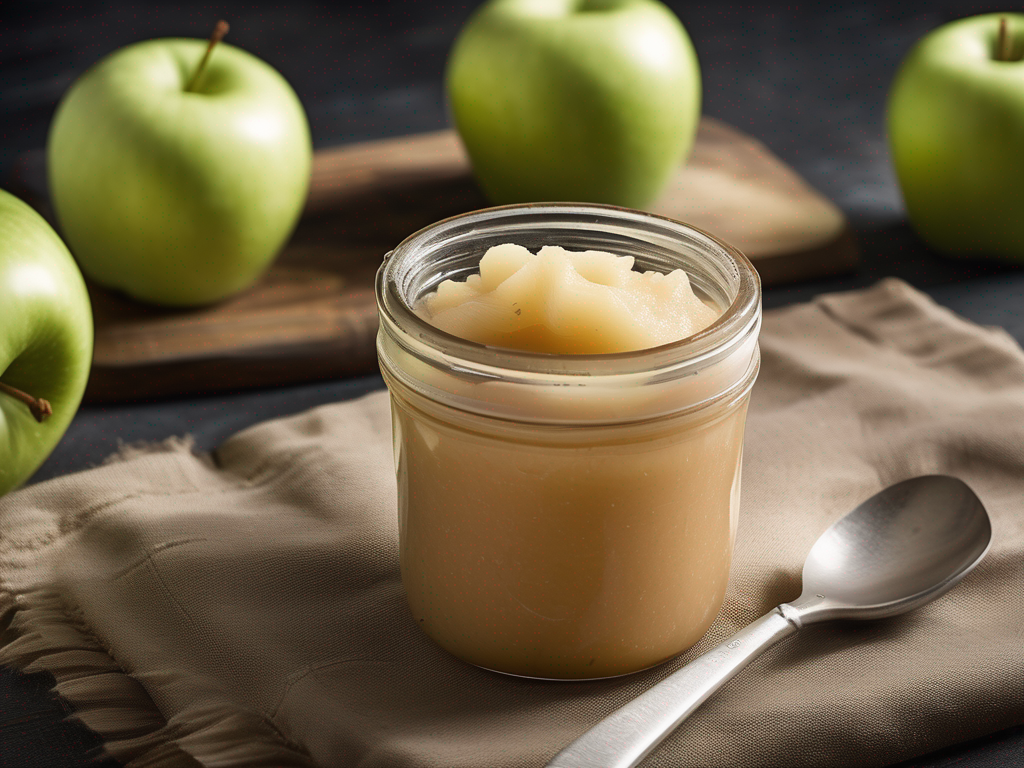
How to Properly Store Opened Applesauce to Prevent Mold
Get Your Free Food Safety Cheat Sheet
30 most common foods with instant answers. Print it and stick it on your fridge—completely free!
How to Properly Store Opened Applesauce to Prevent Mold
Applesauce is a delicious and nutritious snack that can be enjoyed by people of all ages. Whether you prefer it as a standalone treat or as a versatile ingredient in baking and cooking, ensuring that your opened applesauce stays fresh and mold-free is essential for food safety. In this blog post, we will discuss practical tips on how to properly store opened applesauce to prevent mold growth. (Applesauce)
Understanding Applesauce Storage
Before delving into the specifics of storing opened applesauce, it's important to understand the factors that contribute to mold growth in food. Mold thrives in environments with moisture, warmth, and oxygen, making improperly stored applesauce a prime breeding ground. By following proper storage guidelines, you can extend the shelf life of your opened applesauce and reduce the risk of contamination.
Factors That Influence Mold Growth in Applesauce
-
Temperature: Applesauce should be stored at a consistent temperature to inhibit mold growth. Avoid exposure to extreme heat or cold, as fluctuations can promote spoilage.
-
Air Exposure: Oxygen exposure can accelerate the deterioration of applesauce. Properly sealing the container after each use is crucial for minimizing air contact.
-
Moisture Content: Applesauce contains natural sugars that can attract mold if exposed to excessive moisture. Controlling humidity levels during storage is essential for preserving freshness.
Tips for Properly Storing Opened Applesauce
Now that we've covered the basics of mold growth in applesauce, let's explore practical tips for storing opened applesauce to maintain its quality and safety.
1. Choose the Right Container
- Transfer the leftover applesauce into an airtight container to minimize air exposure and prevent moisture buildup.
- Opt for containers made of glass or BPA-free plastic to ensure food-grade safety.
2. Refrigerate Promptly
- After opening a new jar of applesauce, refrigerate it promptly to slow down the growth of mold and bacteria.
- Store the applesauce in the main compartment of the refrigerator, away from areas prone to temperature fluctuations.
3. Label and Date the Container
- Clearly label the container with the date of opening to track its freshness.
- Use a permanent marker or adhesive label to avoid confusion with other food items in the fridge.
4. Keep the Refrigerator Clean
- Regularly clean and sanitize your refrigerator to prevent cross-contamination and mold transfer to the applesauce.
- Wipe spills and leaks promptly to maintain a hygienic storage environment.
5. Monitor Expiry Dates
- Check the expiration date on the original applesauce packaging and adhere to it even after opening.
- Discard any leftover applesauce if it shows signs of mold, discoloration, or off-odors.
Conclusion
Properly storing opened applesauce is crucial for preventing mold growth and ensuring food safety. By following the tips outlined in this blog post, you can prolong the shelf life of your applesauce and enjoy it without concerns about contamination. Remember to prioritize cleanliness, temperature control, and airtight storage to preserve the freshness of your favorite snack. With these practices in place, you can savor your applesauce worry-free and indulge in its delicious flavor whenever you please. (Applesauce)
Authoritative Food Safety References
These agencies and university labs inform every tip and health precaution we publish.
USDA FoodKeeper – Cold Storage Guidelines
Official refrigerator, freezer, and pantry timelines maintained by the U.S. Department of Agriculture.
Visit USDA FoodKeeperFDA Produce Safety Rule & Grower Guidance
Field-to-fridge handling practices that prevent contamination of fruits, vegetables, and leafy greens.
Visit FDA Produce SafetyCDC Foodborne Illness Prevention Hub
Surveillance-backed guidance on pathogens, symptoms, and steps to reduce foodborne illness risk.
Visit CDC Food SafetyUC Davis Postharvest Technology Center
University research detailing optimal storage atmospheres for produce after harvest.
Visit UC Davis PostharvestPenn State Extension – Home Food Preservation & Safety
Peer-reviewed extension bulletins on safe canning, chilling, and reheating practices.
Visit Penn State ExtensionGet Your Free Food Safety Cheat Sheet
30 most common foods with instant answers. Print it and stick it on your fridge—completely free! Want more? Upgrade to the complete guide with 70+ foods.
Scan your food directly and get instant safety info using our AI-powered camera feature.